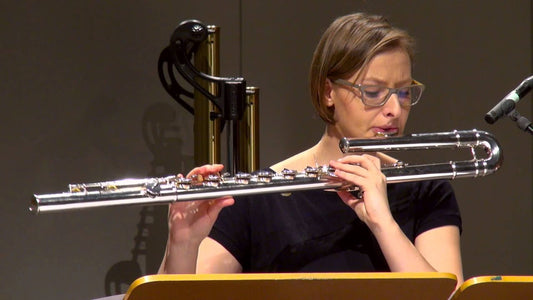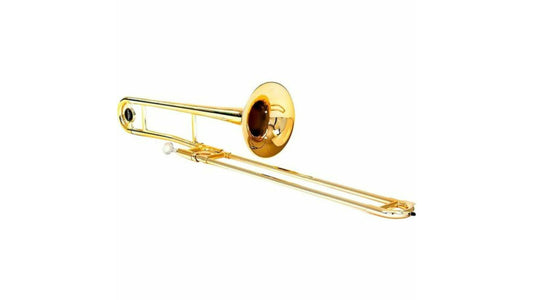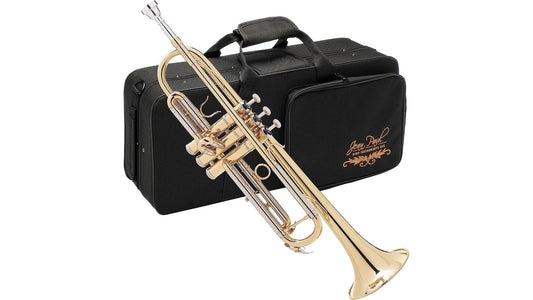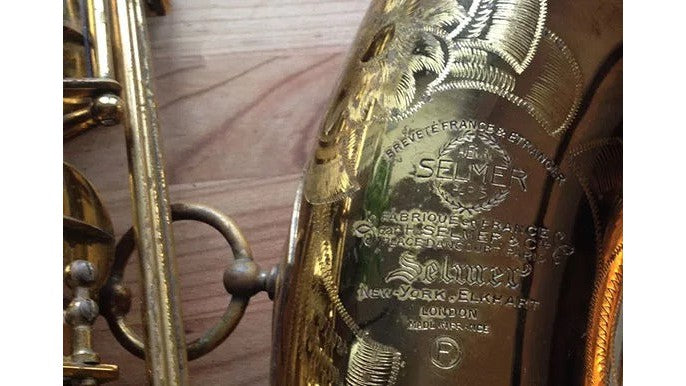
Selmer Mark VI - Cây Kèn Saxophone Huyền Thoại Đắt Bậc Nhất Thế Giới
“Vào những năm 1950, các nghệ sỹ như John Coltrane, Sonny Rollins và Wayne Shorter đã mua một cây kèn “Mark VI” mà không biết cây kèn họ sở hữu sau này sẽ trở thành một huyền thoại!”
“Không còn nghi ngờ gì nữa, cây kèn saxophone nổi tiếng và được săn lùng nhiều nhất trên thế giới là Selmer Mark VI. Nhưng tại sao?".
Trong 20 năm qua, giá của saxophone tenor và alto Selmer Mark VI đã tăng lên mức 40.000 USD. Toàn bộ các trang web và blog được dành riêng để liệt kê dãy số sê-ri cuối cùng cho chiếc Selmer Mark VI “hoàn hảo” và các nhà sưu tập tìm kiếm những chiếc kèn này từ gác xép và gầm giường ở khắp mọi nơi trên thế giới.
Nếu bạn đang tìm mua một cây saxophone, bạn thậm chí có thể tự hỏi liệu những chiếc saxophone Selmer hiện đại có thể cạnh tranh với những chiếc kèn cổ điển huyền thoại hay không.
Nhưng làm thế nào mà chiếc saxophone Selmer Mark VI này lại trở thành một đối tượng được khao khát như vậy, và liệu có sự thật nào trong huyền thoại này không?
Điều gì khiến Selmer Mark VI được săn lùng?
Nơi câu chuyện bắt đầu
Mark VI được sản xuất lần đầu tiên bởi công ty Selmer vào năm 1954. Đây là mẫu mới thứ sáu được nhà máy sản xuất kể từ khi họ bắt đầu sản xuất chiếc kèn saxophone đầu tiên vào năm 1922 và có nhiều đặc điểm thiết kế mới. Các mẫu Mark VI được sản xuất từ năm 1954-1981. Super Action 80 được Selmer giới thiệu vào năm 1980.
Những model mới này được ghi lại bằng số sê-ri. Số sê-ri được đóng trên cổ được sử dụng để nhận dạng các kiểu saxophone Selmer. Mặc dù các thiết kế của Selmer đã được cải thiện, từ việc phát hành mô hình Balanced Action mang tính cách mạng vào năm 1936 cho đến kèn Super Action, Selmer Mark VI đã mang đến sự kết hợp tốt nhất giữa hai yếu tố chính, giai điệu và ngữ điệu.
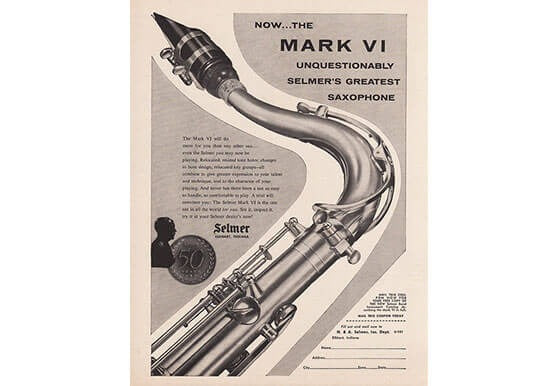
Trên thực tế, một số người sẽ cho rằng cây kèn này là 'cơn bão hoàn hảo' của các cải tiến thiết kế và các thiết kế phím mới từ Selmer Mark VI vẫn là chuẩn mực cho hầu hết các loại kèn mới hiện nay.
Selmer đã sản xuất Mark VI cho đến năm 1974, tạo ra hàng nghìn cây kèn này trong suốt 20 năm hoạt động. Trong thời gian này, đã có nhiều cải tiến nhỏ được thực hiện, và vì mỗi cây kèn đều được chế tạo bằng tay nên có những thay đổi nhỏ giữa các cây kèn với nhau.
Những sự phát triển mới
Năm 1974, chiếc kèn saxophone tenor và alto Mark VI cuối cùng được tung ra khỏi dây chuyền sản xuất, và Selmer đã ra mắt chiếc Mark VII mới. Mặc dù phải mất 3 năm để phát triển Mark VII mode l mới và nó bao gồm những thay đổi đối với cơ chế quãng tám, phím thìa, cổ và chuông, nhưng Mark VII chưa bao giờ nhận được sự chào đón như mẫu trước đó và thường được coi là ít được ưa chuộng hơn.
Huyền thoại
Mark VI đã được sử dụng bởi nhiều người chơi vĩ đại đã xuất hiện trong những năm 1950, như John Coltrane, Sonny Rollins và Wayne Shorter. Tất nhiên, những người chơi này đã mua một chiếc kèn “Mark VI” mới vào thời điểm đó mà không biết cây kèn họ sở hữu sau này sẽ trở thành một huyền thoại.
“Người chơi đổi sang Mark VI vì cảm giác phím kèn và ngữ điệu tốt hơn rất nhiều,” thợ sửa chữa nổi tiếng Emilio Lyons, người đã chế tạo lại kèn cho những người chơi như Stan Getz và Phil Woods, cho biết .
Khi những người chơi này truyền cảm hứng cho các thế hệ tiếp theo, Mark VI đã trở thành một phần của huyền thoại cần được nhân rộng. Ngay cả từ những năm 1970, những người chơi như David Sanborn và Michael Brecker đã là những người ủng hộ rất lớn cho Mark VI, và điều đó vẫn tiếp tục cho đến ngày nay.
Không còn nghi ngờ gì nữa, Mark VI là một chiếc kèn rất tốt và rất có ý nghĩa khi nó ra mắt lần đầu tiên. Và, ngày nay, đối với nhiều người chơi, Mark VI là lựa chọn duy nhất nếu bạn là một người chơi saxophone “xịn”.
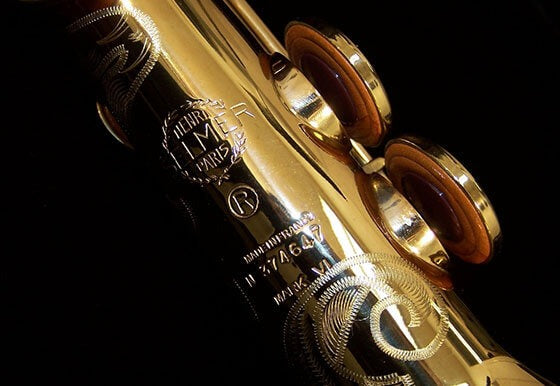
Tuy nhiên, trong những năm qua, nhiều người chơi đã thêu dệt nên nhiều huyền thoại về Mark VI, từ "danh sách số sê-ri hoàn hảo" cho đến thân máy được làm từ đạn pháo tái chế từ Thế chiến thứ hai. Nhiều người thậm chí còn hết lòng chứng thực rằng Mark VI có âm thanh hay hơn bất kỳ loại kèn nào khác, mặc dù nhiều "thử nghiệm mù" (bịt mắt nghe tiếng kèn) đã chứng minh điều ngược lại.
Dù bằng cách nào, khi những chiếc kèn được săn lùng nhiều hơn, giá cả đã tăng lên đáng kể, khiến Mark VI không chỉ là đối tượng được khao khát mà còn là biểu tượng địa vị của nhiều người.
Nhưng huyền thoại về Mark VI có cơ sở khoa học nào không?
Steve Crow đã sở hữu cá nhân một vài chiếc sax Mark VI và đã chế tạo lại hàng trăm chiếc với tư cách là một trong những thợ sửa chữa hàng đầu ở Anh. Steve giải thích : “Cá nhân tôi, lần đầu tiên tôi yêu vẻ ngoài và sự lãng mạn của Mark VI. Nghĩ về việc một chiếc kèn cổ tuyệt đẹp như chiếc Mark VI đã ở đâu, khiến nó trở nên sống động đối với tôi – ngay cả mùi khi bạn mở hộp cũng rất tuyệt.”
Mặc dù vậy, so với các loại kèn hiện đại, Mark VI cần một số thời gian để làm quen, đối với nhiều người, điều quan trọng nhất là cảm giác khi chơi một chiếc. Steve nói: “Tôi luôn cảm thấy nó có một 'sự cộng hưởng' nhất định khi tôi chơi. “Phản hồi qua kèn rất quan trọng để truyền cảm hứng cho bạn với tư cách là một người chơi – đó là một trong những điểm mạnh của Mark V I, theo ý kiến của tôi .”
Thiết kế khác biệt
Liệu có bất kỳ lý do khoa học nào giải thích tại sao chiếc kèn Mark VI có thể 'vang vang' hơn những chiếc kèn mới hơn hay không vẫn còn là điều cần bàn cãi. Tuy nhiên, có sự khác biệt rõ ràng về thiết kế giữa saxophone Mark VI và Mark VII mới có sự khác biệt thực sự, có thể định lượng được về âm thanh và cảm giác.
Mặc dù Mark VI và Mark VII có cùng kích thước thân ống, cổ và chuông khác nhau về kích thước và hình dạng . Steve nói: “Mặc dù việc thay cổ kèn saxophone không ảnh hưởng đến âm thanh đối với khán giả, nhưng nó có tác động lớn đến 'cảm giác' của kèn đối với người chơi. “Tuy nhiên, việc thay đổi tiếng chuông có tác động lớn đến âm thanh phát ra và độ ấm của âm thanh .”
Một cân nhắc khác là thực tế là những chiếc chuông Mark VI được vẽ bằng tay bằng một quy trình khác với những chiếc chuông hiện đại. Điều này mang lại cho mỗi chiếc kèn một đặc điểm riêng, không giống như độ đồng nhất mà bạn có được từ những chiếc kèn được sản xuất bằng kỹ thuật hiện đại.

Sống chung với Mark VI: Tự sự của John Helliwell – Supertramp
Tôi đã mua chiếc tenor Mark VI đầu tiên của mình hoàn toàn mới vào năm 1964 và sử dụng nó cho đến năm 1997 khi tôi thay thế nó bằng một chiếc (mới) từ năm 1960! Tôi yêu các tenor Mark VI của mình. Âm thanh có độ tập trung tuyệt vời và chiếc kèn thực sự thu hút bất cứ thứ gì tôi đưa ra. Tôi đã sử dụng kèn liên tục trong các chuyến lưu diễn với Supertramp và bên cạnh việc bảo trì thông thường, cả hai đều là những nhạc cụ đáng tin cậy. Trên thực tế, cuối cùng tôi đã bán chiếc VI gốc của mình cho Laurent Hunziker ở Pháp, người đã biểu diễn với “The Logical Tramp,” – một ban nhạc tưởng nhớ. Vì vậy, chiếc kèn đó vẫn đang được sử dụng để biểu diễn các giai điệu Supertramp!
Tất nhiên, việc chọn một cây sax 40-60 tuổi làm 'người chơi hàng ngày' của bạn có những thách thức riêng. Nó giống như sử dụng một chiếc ô tô cổ điển làm phương tiện đi lại hàng ngày của bạn. Bạn cần phải bảo dưỡng nhiều hơn trừ khi kèn của bạn được một thợ sửa chữa giỏi đại tu và xây dựng lại hoàn toàn.
Có thể hiểu được rằng nhiều chiếc kèn ở độ tuổi này đã được sử dụng rất nhiều và điều này không chỉ ảnh hưởng đến miếng đệm và nút bần mà còn ảnh hưởng đến sự liên kết của thân đàn và độ mòn của phím đàn. Ngay cả thân ống chính cũng có thể bị uốn cong sau nhiều năm chơi. Tin tốt là mọi thứ đều có thể được xử lý ngay trên một chiếc kèn chất lượng như Mark VI.
Emilio Lyons nói: “Mặc dù có một huyền thoại phổ biến rằng có những chiếc kèn Mark VI 'tốt' và 'xấu', nhưng điều đó thực sự phụ thuộc vào việc chiếc kèn được sửa chữa tốt như thế nào. Ông nói: “Bởi vì Mark VI được chế tạo rất chắc chắn nên một người thợ sửa chữa giỏi có thể đưa bất kỳ chiếc kèn nào trở lại tình trạng tuyệt vời để tồn tại thêm 50 năm nữa.
Tuy nhiên, với mức giá mà những chiếc kèn Mark VI đang bán ngày nay, bạn có thể cho rằng việc mang một chiếc đi lưu diễn là một việc mạo hiểm. Nhiều người chơi London thích sử dụng kèn mới hơn trong các buổi biểu diễn, để lại chiếc Mark VI quý giá của họ khi chơi giải trí.
Selmer Mark VI có dành cho bạn không?
Thật không may, một trong những trở ngại chính cần vượt qua khi mua Mark VI ngày nay là giá cả. Với rất nhiều nhạc cụ mới chất lượng tuyệt vời trên thị trường hiện nay, giá của kèn mới khá cạnh tranh. Thường thì bạn sẽ trả nhiều tiền hơn cho một cây đàn Mark VI trong tình trạng tốt hơn là một nhạc cụ hoàn toàn mới.
Tuy nhiên, mua một chiếc Mark VI là một khoản đầu tư, không giống như hầu hết các loại sax khác. Và một chiếc kèn được chăm sóc tốt sẽ đánh giá cao theo thời gian.
"Từ quan điểm của người chơi, tất cả nên là về âm thanh". - Emilio Lyons
Đối với một số người, tính xác thực của sơn mài ban đầu là một yếu tố quan trọng. Nhiều nhà sưu tập sẽ chỉ tìm kiếm những chiếc kèn có càng nhiều lớp sơn mài nguyên bản càng tốt và từ chối những chiếc kèn đã bị 'lột sạch' lớp sơn mài hoặc đã được mạ lại.
Tuy nhiên, từ quan điểm của người chơi, tất cả phải là về âm thanh, Emilio giải thích. “Tôi đã mạ vàng sax Mark VI cho Ray Charles và Stan Getz, và họ yêu thích những chiếc kèn – họ chơi rất hoàn hảo,” anh nói. “Nếu một chiếc kèn được thay thế đúng cách, thì nó không ảnh hưởng gì đến âm thanh cả .”
Kết luận
Sở hữu một cây kèn saxophone Mark VI giống như sở hữu một phần của huyền thoại âm nhạc. Và, đó là một nhạc cụ tuyệt vời để thưởng thức, cho dù bạn đánh giá cao lịch sử của những người chơi vĩ đại đã sử dụng những chiếc kèn này, âm thanh hay vẻ đẹp tuyệt đối của cây kèn.
Bất kể bạn tin vào những huyền thoại về soprano, tenor hay giọng alto của Mark VI hay không, thì đó vẫn là một nhạc cụ tuyệt đẹp. Đó là một phần của lịch sử âm nhạc hy vọng sẽ ở lại với chúng ta trong nhiều năm tới.
Xem thêm:
Selmer Paris: Lịch Sử Hãng Kèn Saxophone Bậc Nhất
Top 10 Những Cây Kèn Saxophone Tốt Nhất Cho Người Bắt Đầu
Top 12 Hãng Kèn Saxophone Tốt Nhất
Những Lưu Ý Khi Mang Kèn Saxophone Đi Du Lịch
“Soi” Cách Chọn Dăm Kèn, Ống Thổi Của 10 Nghệ Sỹ Jazz Nổi Tiếng


